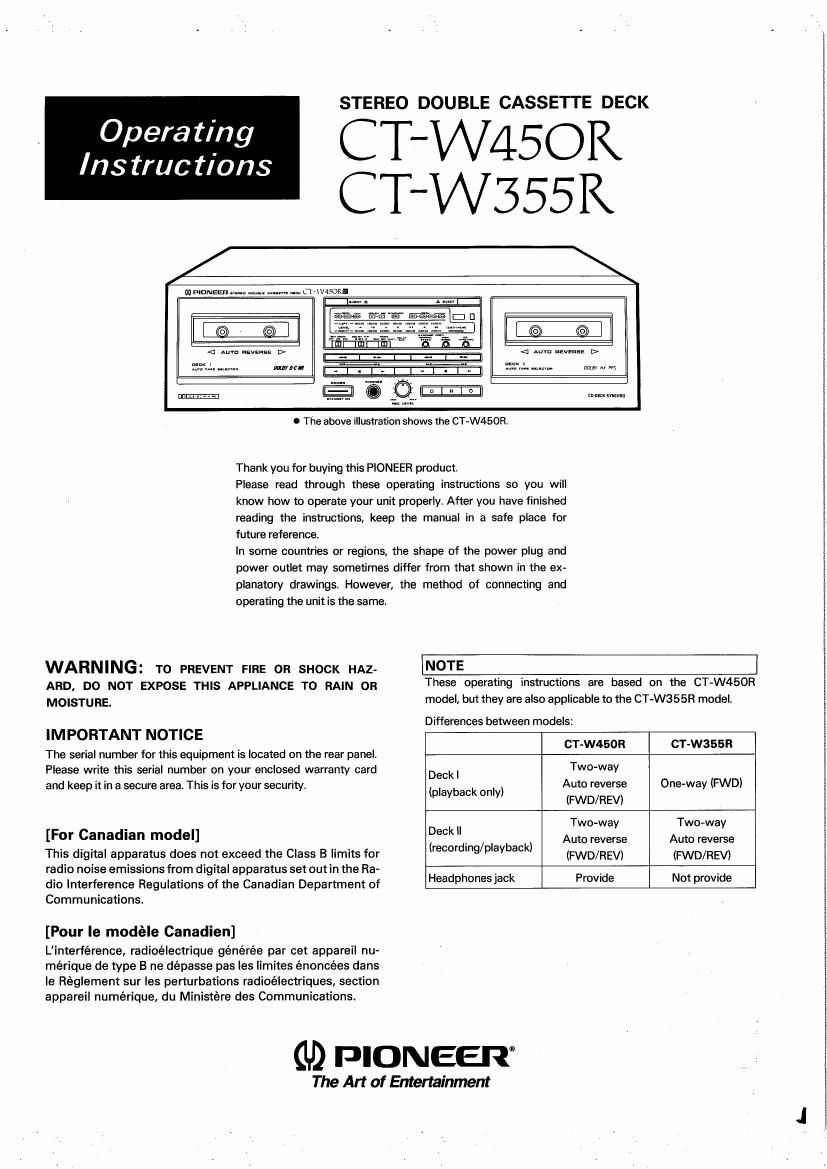Pioneer ctw 355 r owners manual
This is the 16 pages manual for pioneer ctw 355 r owners manual.
Read or download the pdf for free. If you want to contribute, please upload pdfs to audioservicemanuals.wetransfer.com.
Page: 1 / 16
